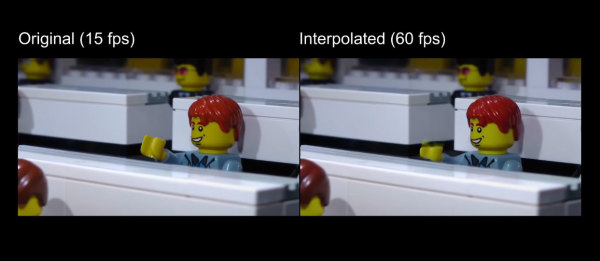This was also to be expected. Since neural networks have become prominent in many areas due to the natural completion of missing information, an attempt with stop-motion material was obvious.
And so the stop motion animator (and AI scientist) LegoEddy once applied a special AI model for frame interpolation (DAIN) to his (with 15 fps) self-animated Lego stop-motion clips.
DAIN can be considered state-of-the-art frame interpolation, because it is able to recognize object overlaps as well as depth information without additional user interaction.

The result is surprising in two ways. On the one hand, because the achieved quality of the interpolation really succeeds on an extremely high level and only very occasionally badly resolved artifacts are visible. And on the other hand, because you are not used to stop-motion motion animation at 60 fps, which creates a completely new visual impression. If this new impression is better in the end is literally in the eye of the viewer. But it shows once again how AI models will completely change the processes in film in the future.
In his video, LegoEddy describes a few more background reasons for DAIN - including how you can use it completely free of charge for your own projects. And in the video there is a link to (s)a complete Lego film, which was projected from 15fps to 60 frames per second.
Have fun being amazed...

